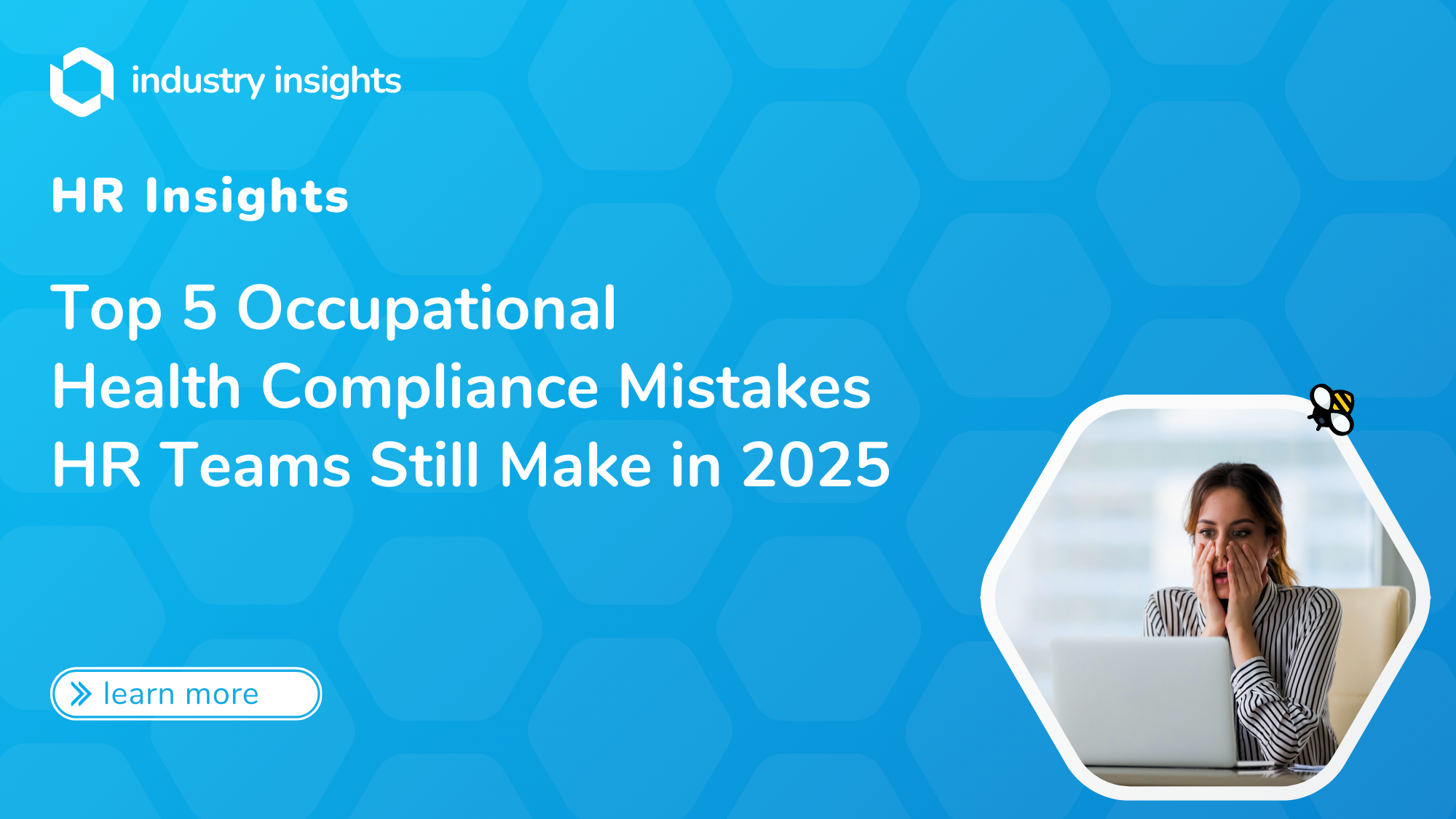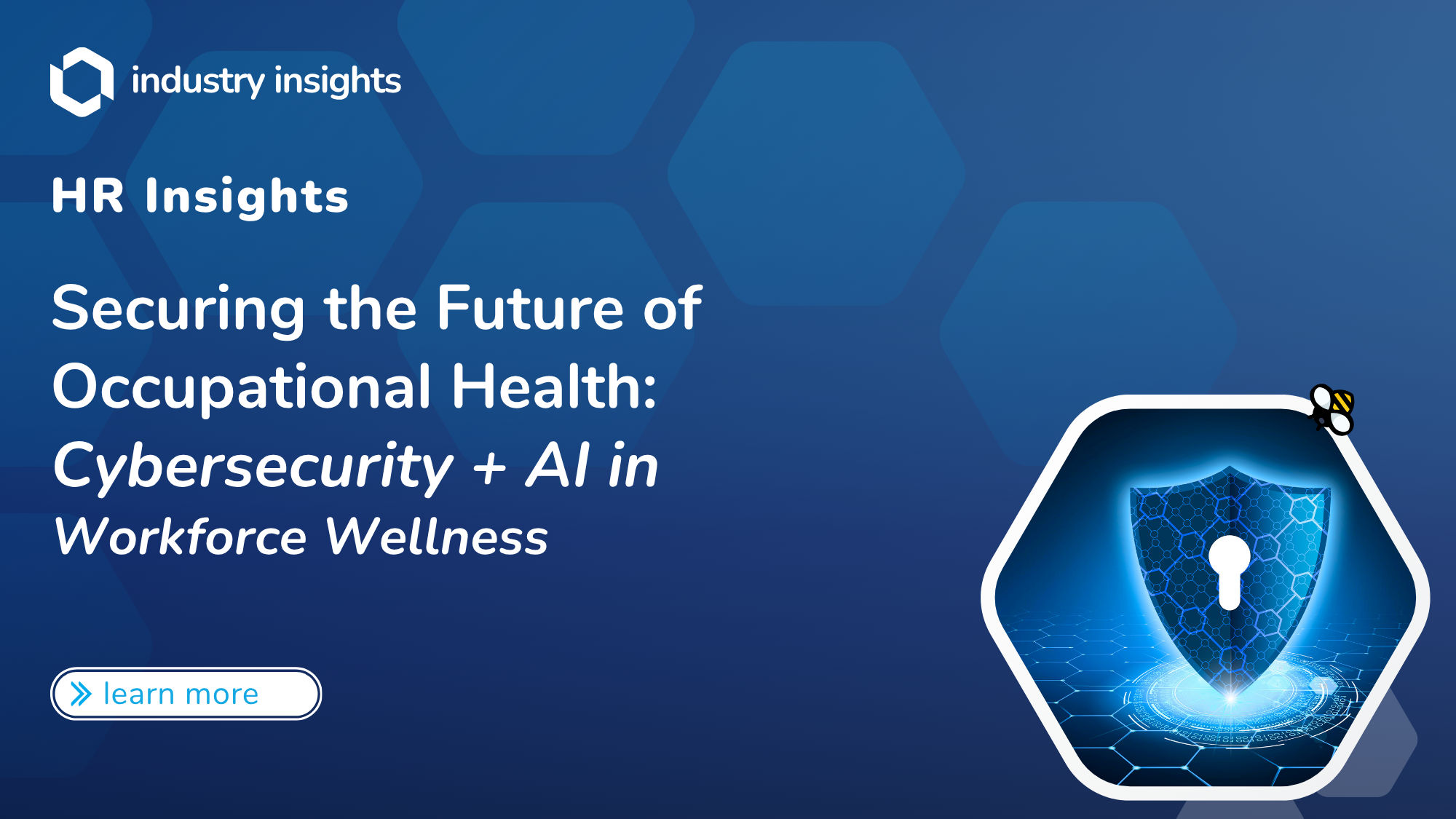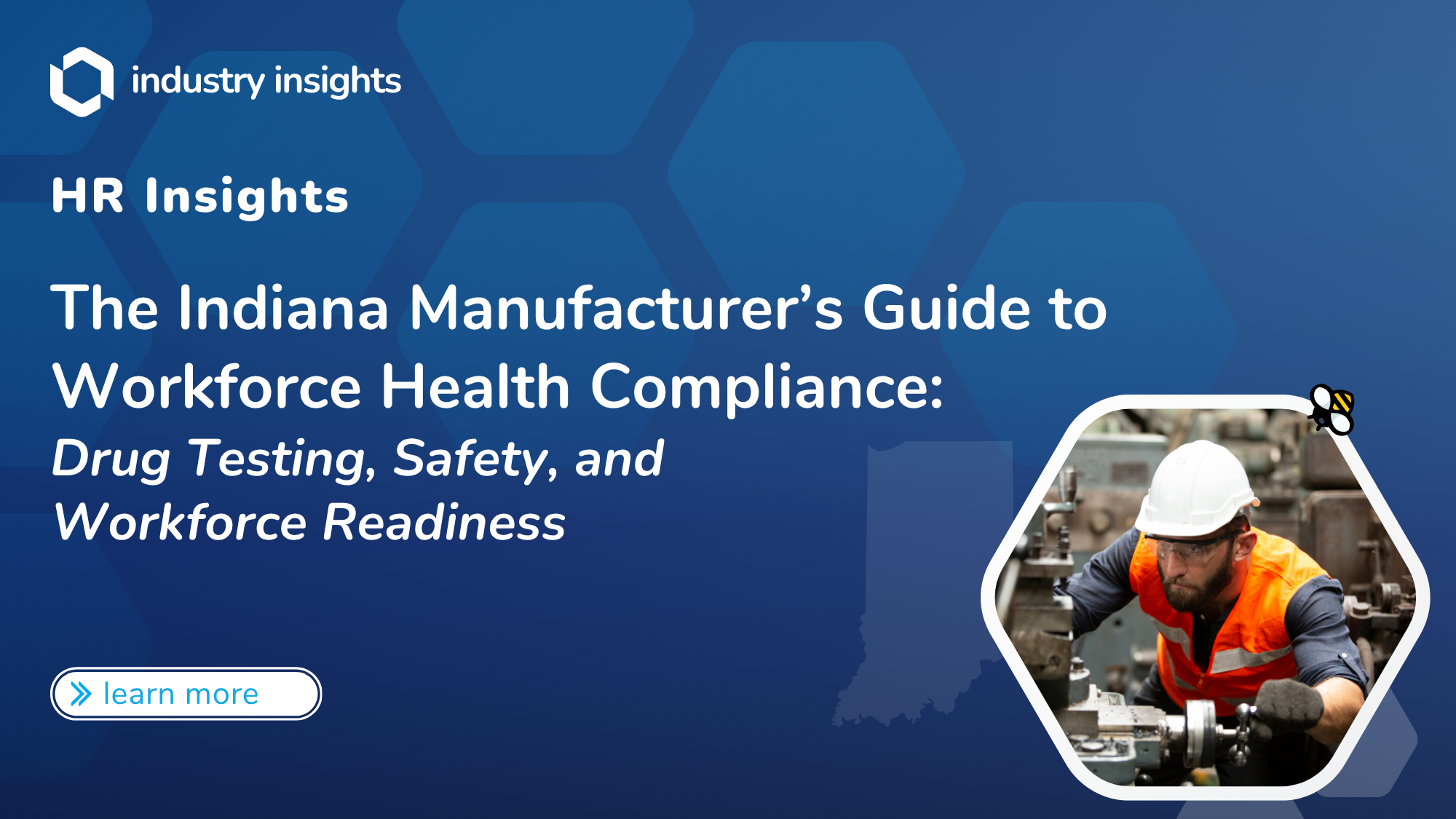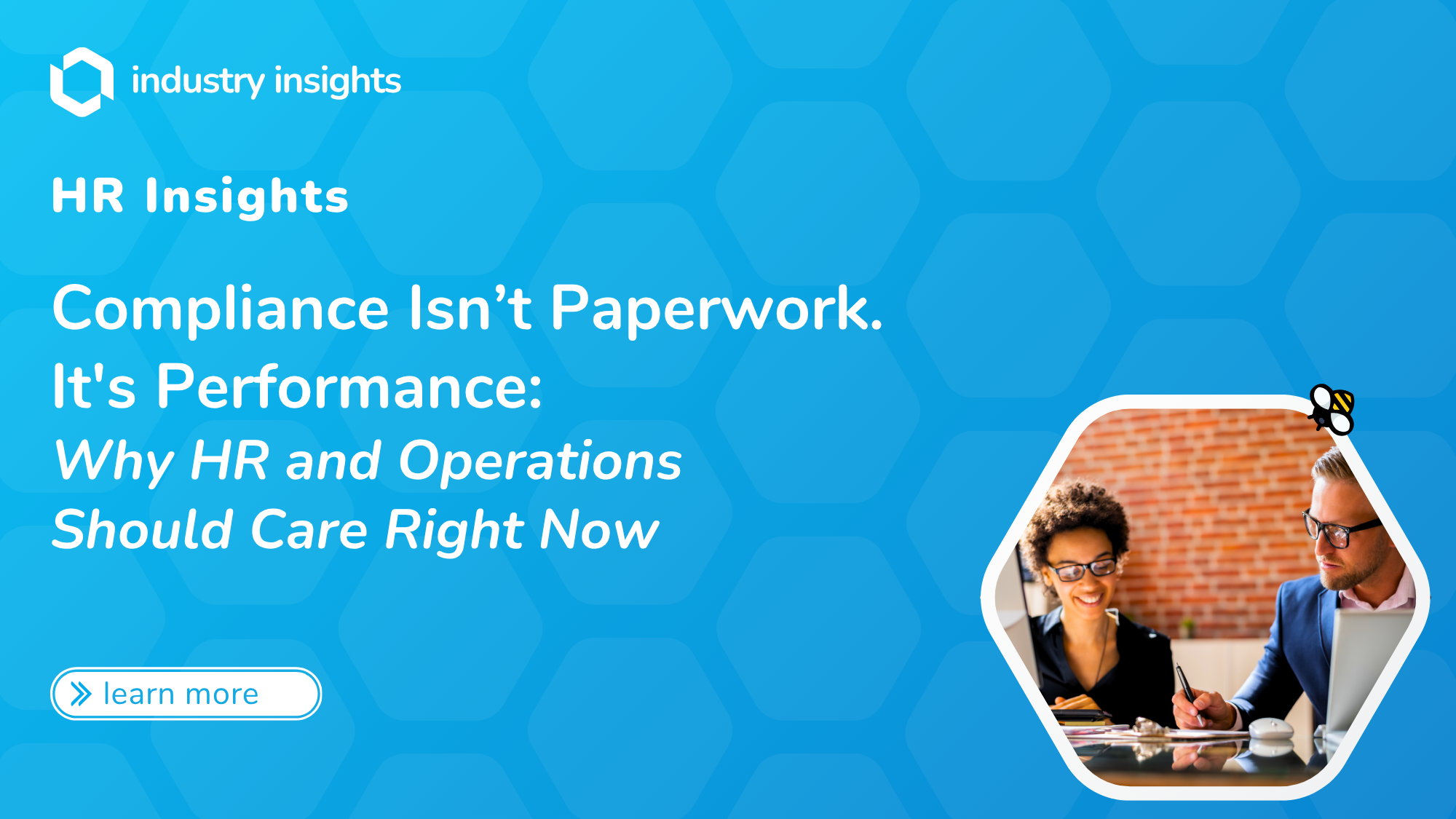Staying compliant should not feel like a second job. Yet many teams still stumble on the same avoidable pitfalls: late or incomplete OSHA records, inconsistent drug screening steps, missing respirator program basics, fuzzy rules on medical information, and fragmented vaccine tracking.
The good news is that each mistake has a straightforward fix. This guide shows what usually goes wrong, the exact rule or guideline behind it, and a simple plan to get back on track. Where it helps, we also note how platforms like BlueHive can reduce clicks, paperwork, and back-and-forth.

Mistake #1: Treating OSHA Injury and Illness Records as “Once a Year Paperwork”
The Issue: Many HR teams wait until January to scramble through the OSHA 300 log. That often means missing cases, late submissions, or wrong forms.
Why it Matters: Osha requires continuous recordkeeping, not just an annual check-in (OSHA, n.d.).
Quick Fix:
- Update incidents as they happen.
- Set a recurring reminder for the February posting and electronic submission.
- Train backups so one person isn’t carrying the load.
BlueHive Advantage: Utilize BlueHive’s reporting and analytics to ensure that your workforce is compliant, year-round.

Mistake #2: Delaying DOT Drug Testing
The Issue: Drivers in safety-sensitive roles sometimes start work before their pre-employment drug test results are in. That’s a compliance red flag.
Why it Matters: DOT regulations clearly state that drivers cannot perform safety-sensitive duties until they’ve passed the required testing (49 CFR 382.301).
Quick Fix:
- Gate the first day of work on verified results.
- Use a standard checklist for collections, reviews, and documentation.
- Flag DOT positions in your HR system so that nothing slips through.
BlueHive Advantage: BlueHive’s centralized platform allows you to quickly schedule drug testing at one of our network of over 20,000 clinics and track results.

Mistake #3: Skipping Respirator Medical Evaluations and Annual Fit Tests
The Issue: Buying respirators and handing out a one-time training session isn’t enough. Without medical evaluations and yearly fit tests, you’re out of compliance, and your workers aren’t truly protected.
Why it Matters: OSHA’s Respiratory Protection Standard requires a full program, including medical clearance and annual fit tests (29 CFR 1910.134).
Quick Fix:
- Schedule medical evaluations before mask use.
- Fit test annually – or sooner if masks or faces change.
- Store all test records in one place.
BlueHive Advantage: With BlueHive, you can set up automated reminders for expiring certifications, including respirator fit testing.

Mistake #4: Overstepping on Medical Questions (ADA)
The Issue: It’s tempting to ask detailed health questions during hiring or employment, but too much probing can cross ADA boundaries.
Why it Matters: The ADA only allows disability-related inquiries that are job-related and consistent with business necessity (EEOC, 2008).
Quick Fix:
- Ask only what’s essential for the job.
- Keep medical info separate from personnel files.
- Train managers so they know what’s off-limits.
BlueHive Advantage: In BlueHive’s employer, provider, and employee dashboards, PHI and other sensitive information are limited to those who need to access them based on their roles.

Mistake #5: Treating Immunizations as “Set It and Forget It”
The Issue: Spreadsheets collect dust, contractors fall through the cracks, and new CDC vaccine guidance goes unnoticed.
Why it Matters: The CDC updates its adult immunization schedules regularly. Staying current is part of keeping your workforce protected. (CDC, 2025)
Quick Fix:
- Centralize vaccine records.
- Automate reminders for flu shots, Hep B, and other role-specific vaccines.
- Recheck CDC updates quarterly.
BlueHive Advantage: BlueHive’s platform offers rule-based reminders, easy upload of records, and analytics that flag gaps.

A Better Habit: Think “Total Worker Health”
Instead of juggling compliance tasks separately, many employers are moving toward the Total Worker Health model – integrating safety and well-being under one plan (NIOSH, 2024). The result? Less duplication, faster clearances, and healthier, happier employees.
Quick Checklist:
- OSHA Logs are up to date.
- DOT drug tests cleared before start dates
- Respirator program includes medical evals and annual fit tests
- ADA rules understood, medical info kept separate
- Immunizations tracked and updated per CDC schedules

Conclusion
Compliance doesn’t have to feel like a maze of acronyms and deadlines. With a little structure – and the right tech partner – you can keep your team on track, avoid fines, and free up more time for what HR is really about: people.
BlueHive makes it easier by putting compliance reminders, provider scheduling, and recordkeeping all in one place. Less paper, fewer headaches, more peace of mind.
Download the Whitepaper
Sources
- Centers for Disease Control and Prevention. (2025, August 7). Adult immunization schedule by age. U.S. Department of Health & Human Services. https://www.cdc.gov/vaccines/hcp/imz-schedules/adult-age.html
- Centers for Disease Control and Prevention, National Institute for Occupational Safety and Health. (n.d.). About the Total Worker Health approach. U.S. Department of Health & Human Services. https://www.cdc.gov/niosh/twh/about/index.html
- Equal Employment Opportunity Commission. (2000). Enforcement guidance on disability-related inquiries and medical examinations of employees under the ADA. U.S. Equal Employment Opportunity Commission. https://www.eeoc.gov/laws/guidance/enforcement-guidance-disability-related-inquiries-and-medical-examinations-employees
- Occupational Safety and Health Administration. (n.d.). Injury and illness recordkeeping and reporting requirements. U.S. Department of Labor. https://www.osha.gov/recordkeeping
- Occupational Safety and Health Administration. (n.d.). Respiratory protection: 29 CFR 1910.134. U.S. Department of Labor. https://www.osha.gov/laws-regs/regulations/standardnumber/1910/1910.134
- U.S. Government Publishing Office. (n.d.). 49 CFR §382.301 Pre-employment testing. Electronic Code of Federal Regulations. https://www.ecfr.gov/current/title-49/subtitle-B/chapter-III/subchapter-B/part-382/subpart-C/section-382.301




